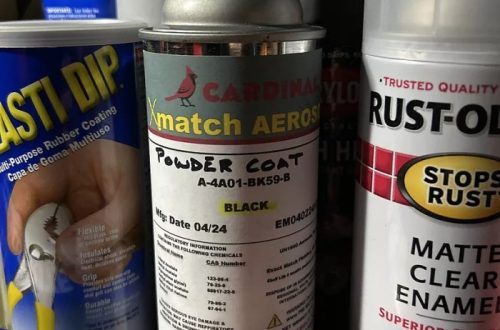The world of chemistry relies heavily on a diverse array of glassware, each piece meticulously designed for specific tasks. Two fundamental vessels, the beaker and the flask, stand out for their versatility and functionality. Though they may appear similar at first glance, these workhorses of the laboratory possess distinct strengths and weaknesses that make them suitable for different applications.
Part 1: Unveiling the Designs

The Beaker: A Master of Measurement and Observation
Beakers boast a straightforward cylindrical design with a flat bottom and a spout on the rim. This simple yet effective shape prioritizes clear visibility and ease of use. The straight sides offer an unobstructed view of the solution within, allowing for close observation of color changes, precipitate formation, and other visual cues that are crucial for monitoring reactions. The spout facilitates controlled pouring and transferring of liquids, minimizing waste and ensuring accurate delivery. Additionally, many beakers come etched with volume markings on their sides, although these markings are for estimation rather than precise measurement.
The Flask: A Champion for Reactions and Storage
Flasks, most commonly seen in the Erlenmeyer design, feature a contrasting shape. They have a broad, round bottom that tapers into a narrow neck. This conical design offers several advantages for conducting reactions. The wide base provides ample space for holding and mixing solutions, while the narrow neck helps minimize spills during transfers and swirling motions. The narrow neck also allows for the secure placement of stoppers or corks, which is crucial for reactions requiring a closed environment or long-term storage. Flasks are often made of borosilicate glass, a material known for its excellent heat resistance, making them ideal for heating and boiling reactions.

Part 2: Choosing the Right Tool for the Job
Beakers for Measurement, Mixing, and Observation
The unique features of beakers make them the go-to choice for several laboratory tasks. Their clear walls make them perfect for tasks that require close observation and monitoring of reactions. The wide mouth allows for easy addition of reagents, stirring, and facilitates cleaning. While not as precise as graduated cylinders, the volume markings on beakers provide a quick and convenient way to estimate solution quantities, making them suitable for preparing solutions that don’t require extreme accuracy. Additionally, the spout allows for controlled pouring and transferring of liquids, minimizing spills and ensuring efficient use.
Flasks for Reactions, Heating, and Storage
Flasks excel in tasks involving reactions, particularly those requiring heating or boiling. Their wide base allows for efficient stirring and mixing, while the narrow neck minimizes evaporation and prevents unwanted contamination. Additionally, flasks can be stoppered to create a closed system for reactions that require specific gas environments or to store solutions for later use. This closed environment also minimizes the risk of fumes escaping during the reaction. The heat resistance of borosilicate glass makes flasks ideal for applications involving elevated temperatures.

Part 3: A World Beyond – Specialized Designs
The world of laboratory glassware extends far beyond the classic beaker and flask. Each has specialized variations designed for specific purposes:
Griffin Beakers:
These specialized beakers are equipped with additional features that enhance their functionality and versatility in various laboratory applications. The presence of a pouring spout facilitates precise and controlled pouring of the contents, allowing for accurate transfer of liquids without spillage or waste. This attribute is particularly useful in processes that require meticulous measurement and handling of reagents, ensuring that the desired volumes are securely and accurately dispensed. Furthermore, the inclusion of a ground-glass stopper provides the capability for the beaker to function as part of a closed system, enabling reactions that necessitate containment and controlled environmental conditions. This feature adds a layer of flexibility and adaptability to the beaker, allowing it to accommodate a broad range of experimental requirements related to chemical reactions and material handling.
Volumetric Flasks:
These specialized flasks are meticulously engineered for the precise preparation of solutions with highly accurate volumes. Utilizing a single, designated marking, these flasks provide a clear and precise indication of the exact volume that they can hold. This feature offers substantial benefits in laboratory settings, ensuring that researchers and scientists can confidently and reliably measure and dispense the precise volumes of reagents required for their experiments. The single, precise marking on the flask eliminates any ambiguity, effectively streamlining the process of solution preparation, and minimizing the potential for errors in volume measurements. By employing these flasks, laboratory personnel can maintain a high level of accuracy and precision in their analytical work, thereby enhancing the reliability and reproducibility of their experimental results. The design of these flasks reflects a commitment to facilitating meticulous and standardized solutions, contributing to the advancement of scientific research and analysis through consistent and precise volumetric measurements.

Round-Bottom Flasks:
These specialized flasks feature a distinctively designed perfectly spherical bottom, which offers significant advantages in various laboratory applications, particularly in distillation procedures. The spherical bottom design plays a crucial role in facilitating uniform heat distribution during distillation processes. This feature helps to ensure that the heat is evenly dispersed throughout the liquid contents, promoting consistent evaporation and condensation rates across the entire surface area. As a result, the spherical bottom design enhances the overall efficiency and reliability of the distillation process, allowing for more precise control and optimization of the purification or separation of substances. Additionally, this design minimizes the likelihood of thermal gradients or hot spots within the flask, contributing to the attainment of accurate and reproducible results.
Part 4: Teamwork Makes the Dream Work

While flasks and beakers have their individual strengths, they often work together seamlessly in a laboratory setting. For instance, a chemist might use a beaker to measure and mix reagents before transferring the solution to a flask for heating or long-term storage. The choice of which tool to use ultimately depends on the specific requirements of the experiment at hand. Understanding the strengths and limitations of both flasks and beakers allows chemists to select the most appropriate equipment for their analyses, ensuring accurate results and efficient experimentation.


